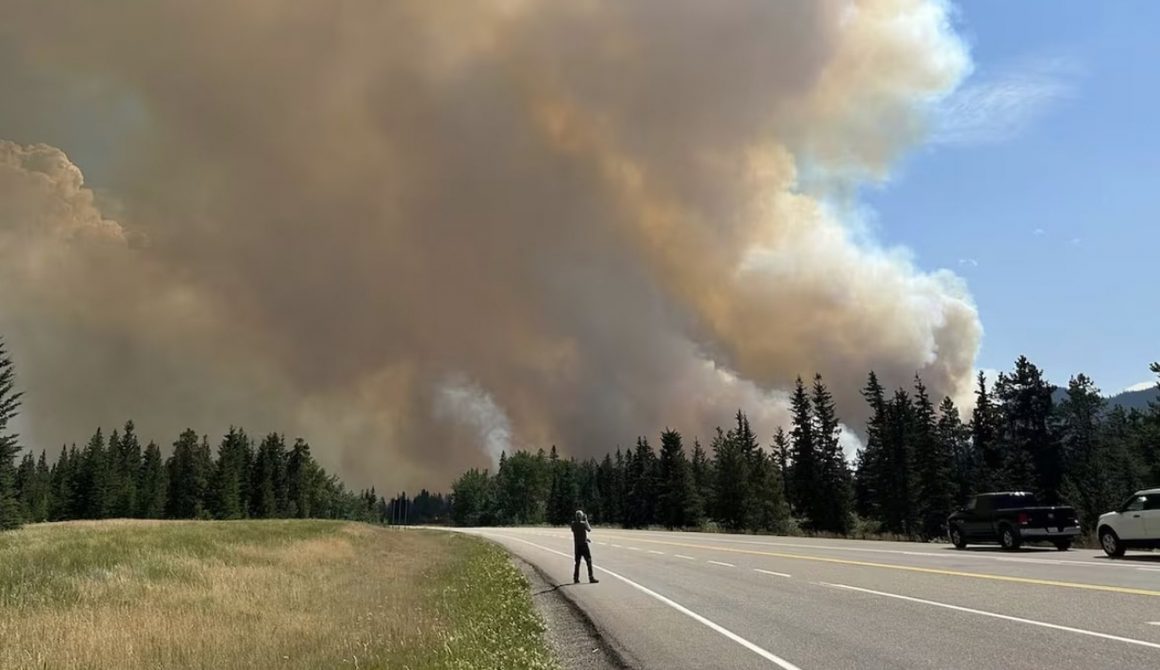
U of C professor discusses Jasper wildfires and the role of climate change
By Kimberly Taylor, August 3 2024—
On July 23, Jasper National Park and Town were evacuated due to a wildfire that remains uncontrolled. Thirty per cent of the townsite was damaged. Firefighters successful in protecting all critical infrastructure and no lives were lost and to what has been called ‘a moving monster’. In response to the devastating fire 80 organizations across Canada released an open letter to the Canadian government urging action against climate change.
The University of Calgary’s Dr. Jed Kaplan — associate professor in the Department of Earth, Energy and Environment — spoke with the Gauntlet about the role of climate change, as well as the effects of land management and the natural forest ecosystem of Western Canada on the Jasper Wildfire Complex.
Kaplan highlighted that due to the climate and landscape of our region the forests of Western Canada evolved alongside wildfire.
“The forests of the Rocky Mountains in Alberta and a large part of surrounding areas are adapted to fire. They are forests that have naturally burned for tens of thousands of years. That’s just a part of our product of the climates that we have here in summertime, where we often have periods of warm weather and dry conditions and also lightning strikes.”
However, Kaplan also explained climate change has increased both the length of these hot dry seasons and the temperatures themselves, both of which contribute to increasing severity and frequency of wildfires.
“Because temperatures are five degrees warmer than the long-term average, the forests – when we do get a warm and dry spell – tend to dry out much more quickly. All of those fuels — grasses and twigs and small branches — that carries a wildfire across the landscape, will become much drier and therefore much more susceptible to large and fast-moving fires when we have conditions like several days or even weeks of over 30-degree temperatures,” Kaplan said.
According to Kaplan, climate change has also impacted the length and severity of insect infestations – which have left large swaths of dead or dying trees in their wake – also contributes to wildfire severity.
“Climate change has increased the frequency and intensity of insect infestation. Warmer winters mean that the beetles don’t die during winter. They come back with even larger populations during the following year. In many parts of the Rockies where we have the same kind of trees in the forest — they’re very vulnerable to large scale insect outbreaks.”
Beyond the influence of climate change on wildfires, Kaplan also described the influence of land-management on wildfires.
“One of the other elements or aspects of the landscape was the presence of Indigenous people. And those people would have been using fire as a tool for landscape management, as a tool for improving their forging opportunities and hunting, as a tool for easing mobility in certain locations.”
Kaplan explained that policies including the removal of Indigenous peoples from their land, making fire as a land-management tool illegal and later industrial fire suppression have all resulted in a disruption of the forests’ natural cycle.
“The combination of the extirpation of Indigenous people from large parts of the landscape and the removal of their traditional land management practices, along with active fire suppression … led to a situation where we have, in many parts of the West, what we call a fire deficit. That is to say, there hasn’t been enough fire on the landscape for many decades now and so that has made the landscape very susceptible to large-scale catastrophic fire.”
Kaplan described newer land-management techniques needed to protect towns like Jasper and other villages from the natural occurrence of wildfires to prevent catastrophic and devastating damages. Creating buffer zones around town and removing thinning forests are a few strategies.
“In order to avoid those kinds of catastrophic damages caused by fire, we need to start thinking about not just sort of letting nature run its course, but actually actively managing landscapes around villages and towns and settlements and other areas of key infrastructure,” Kaplan said.
More information about the Jasper wildfires can be found on the municipality of Jasper website.
